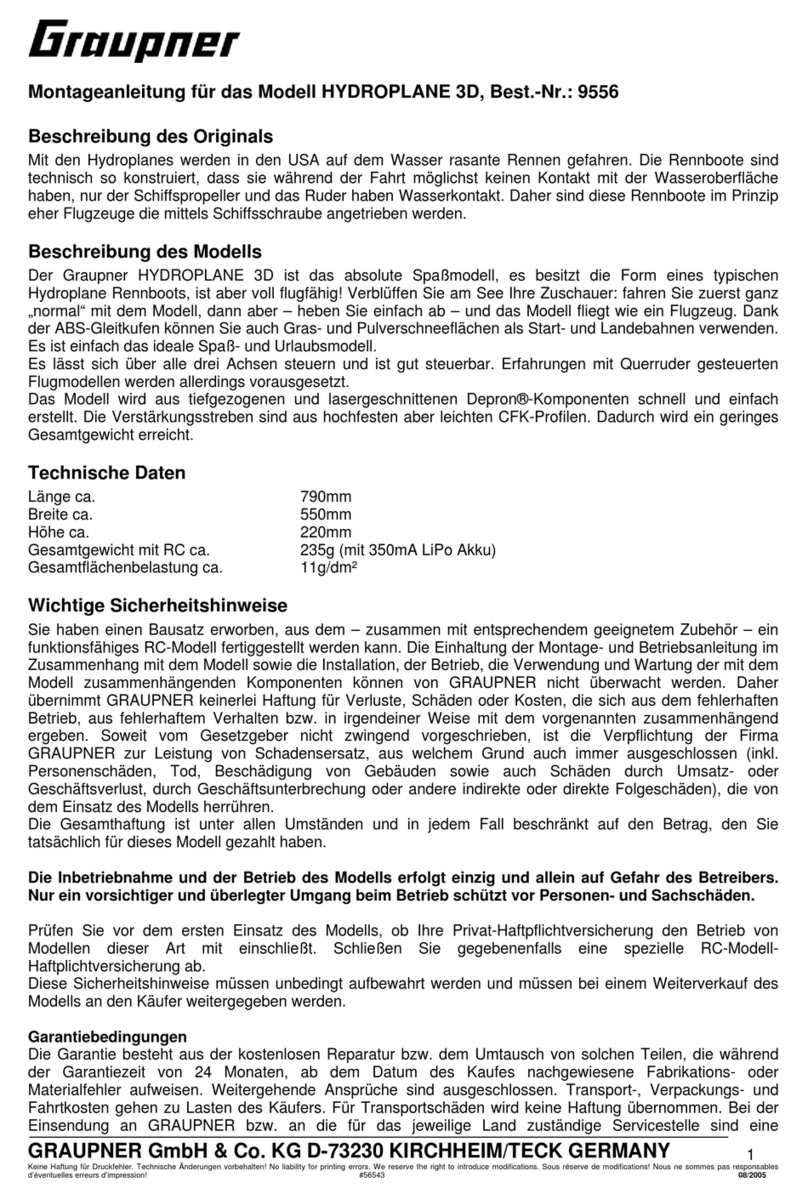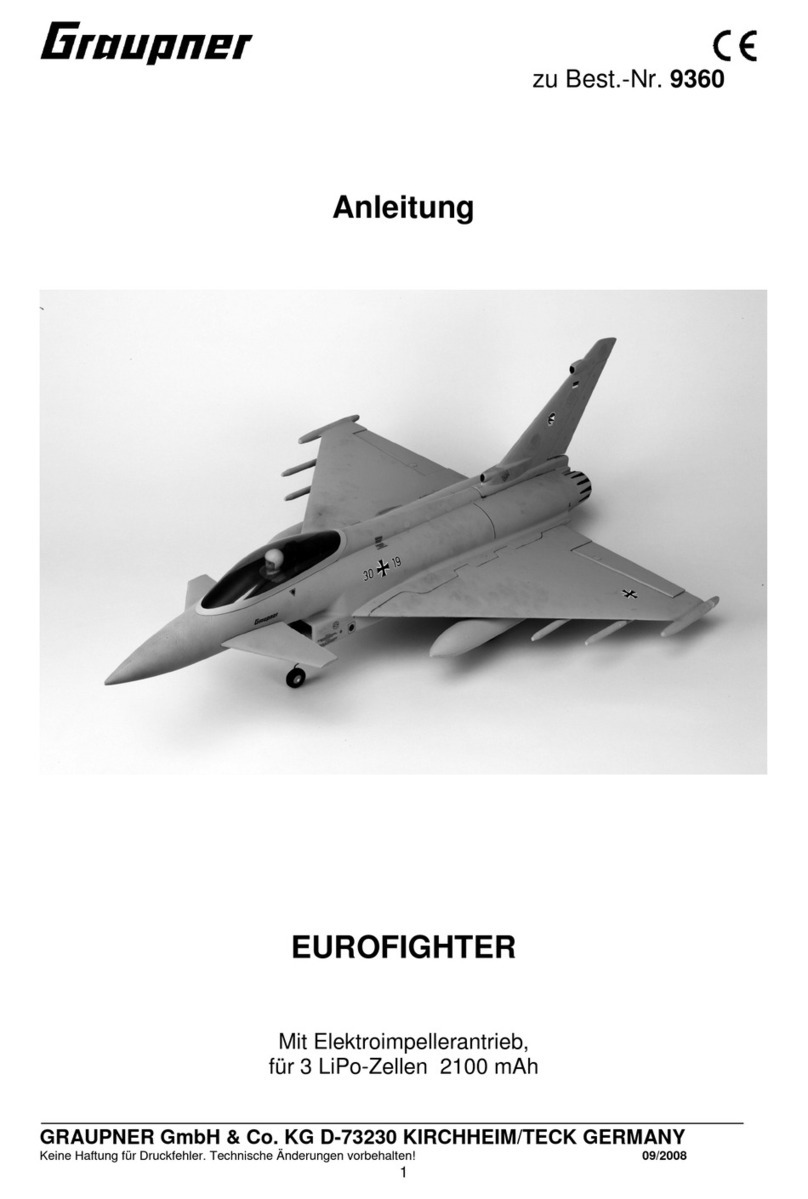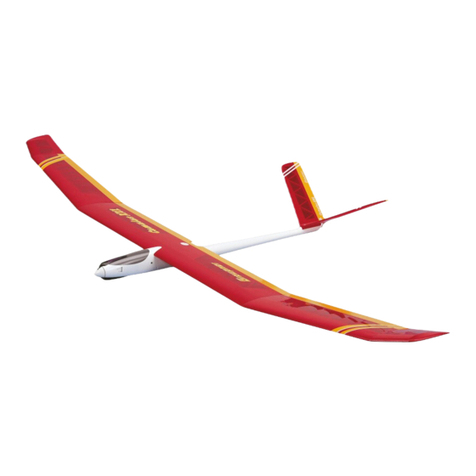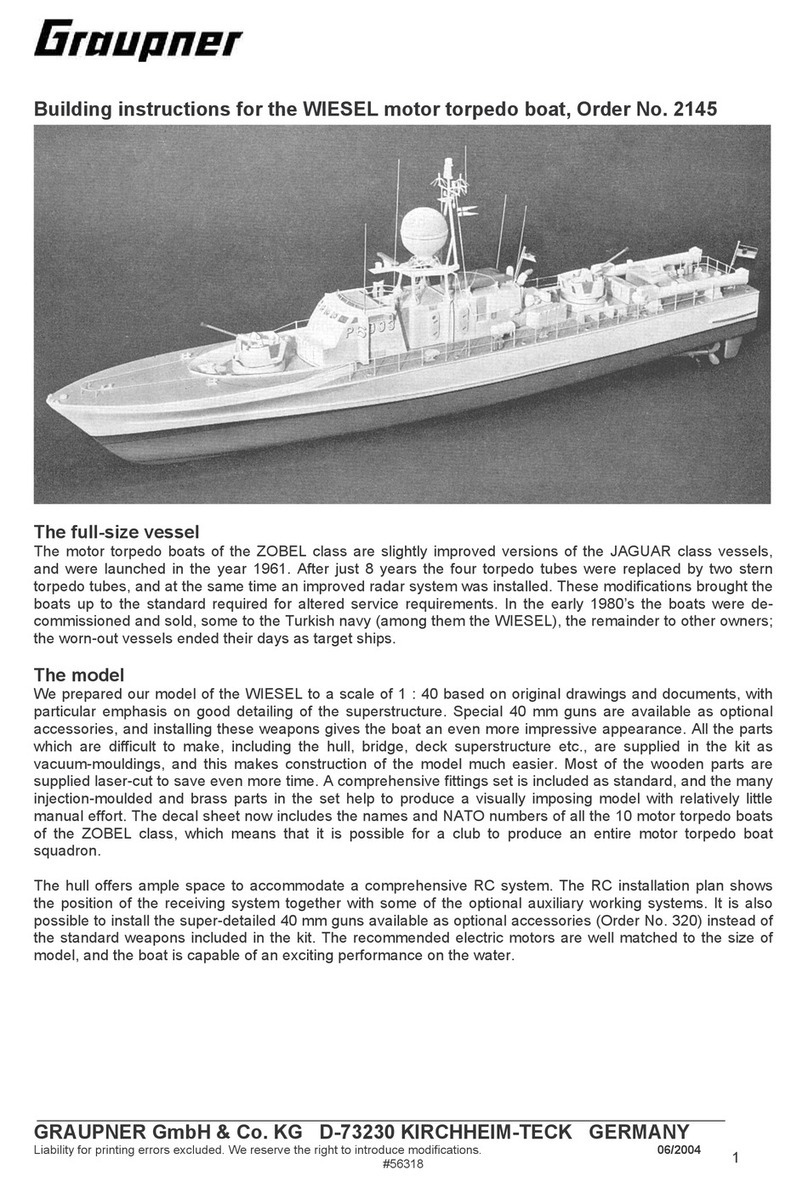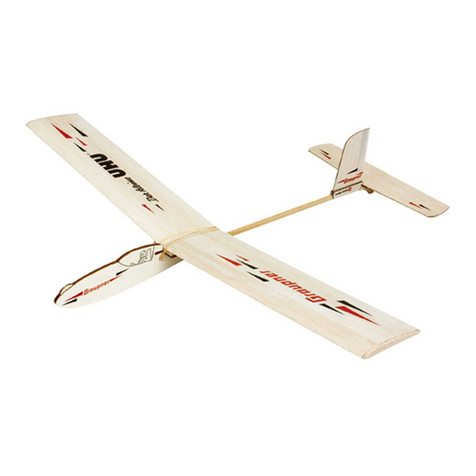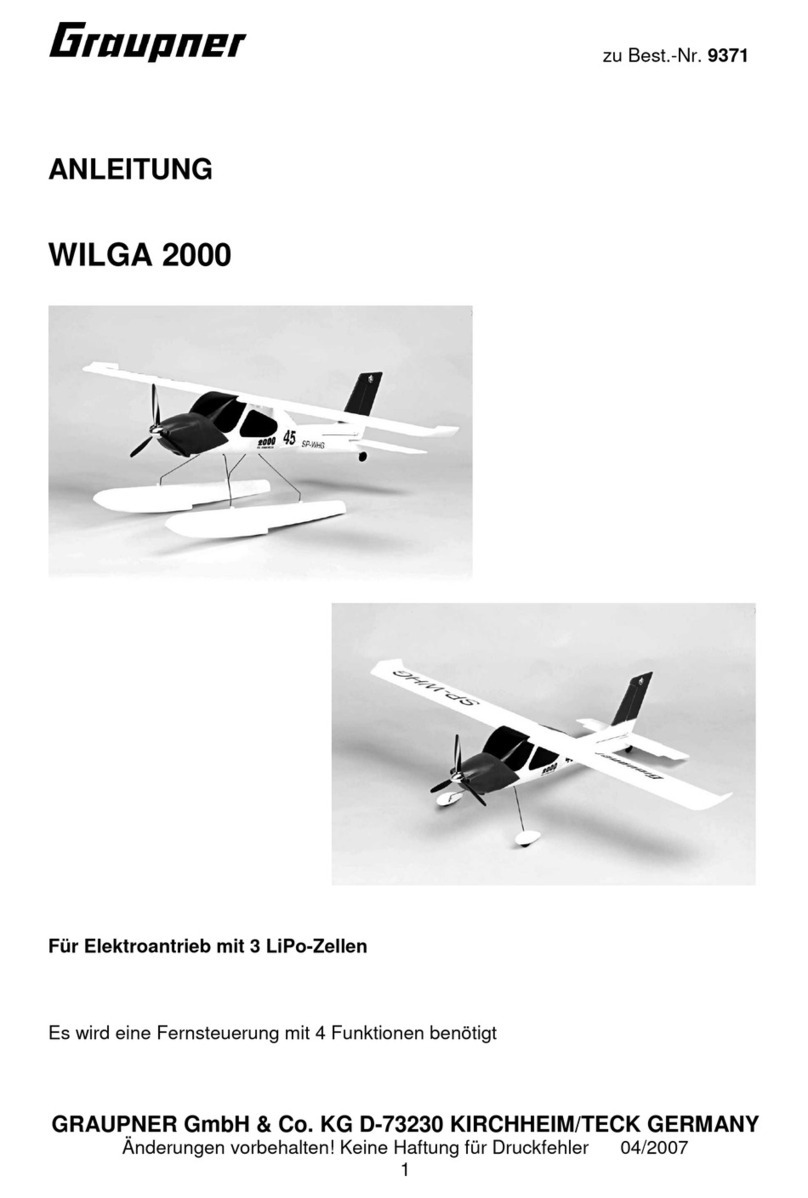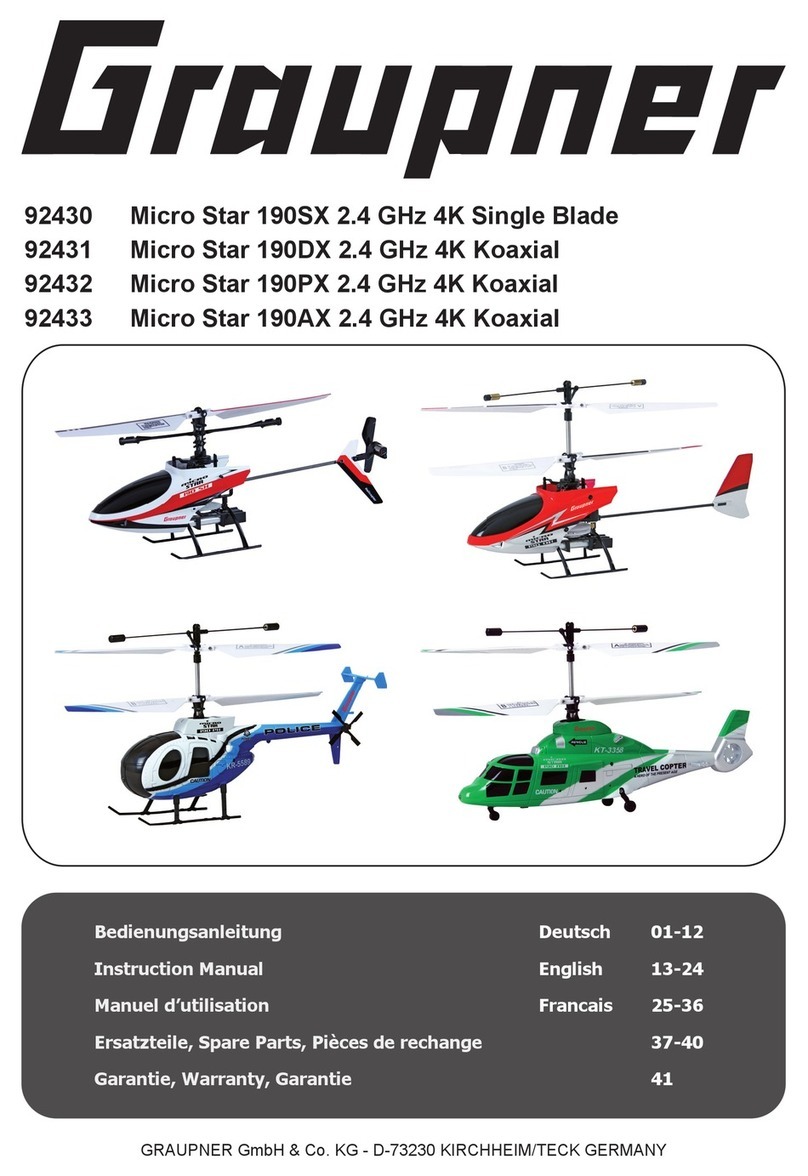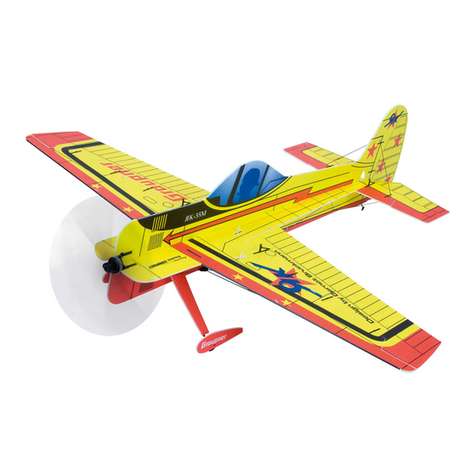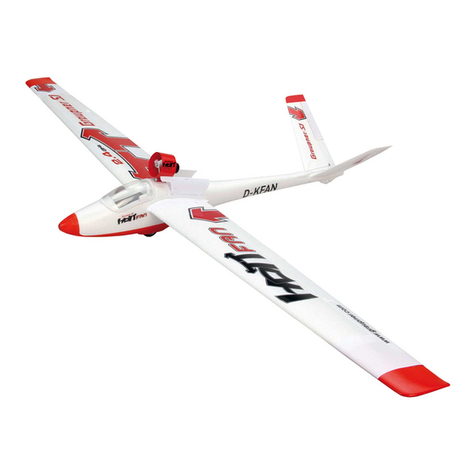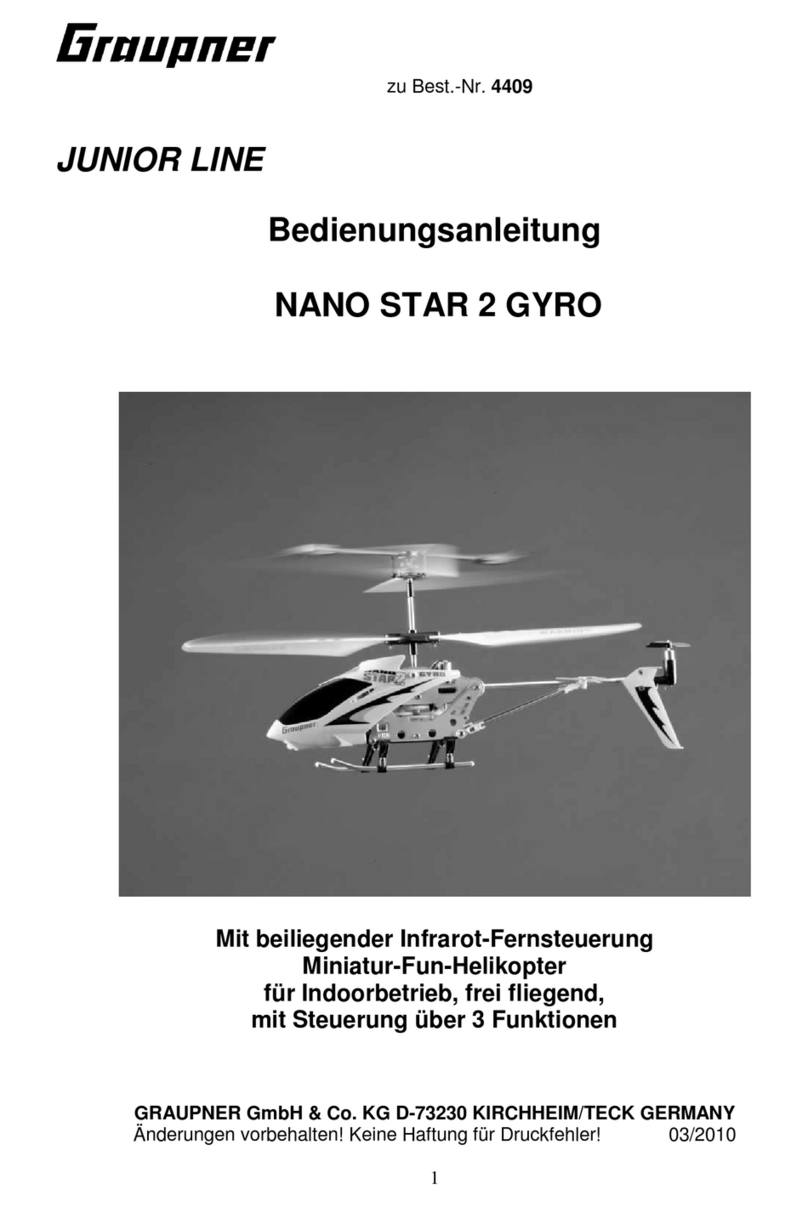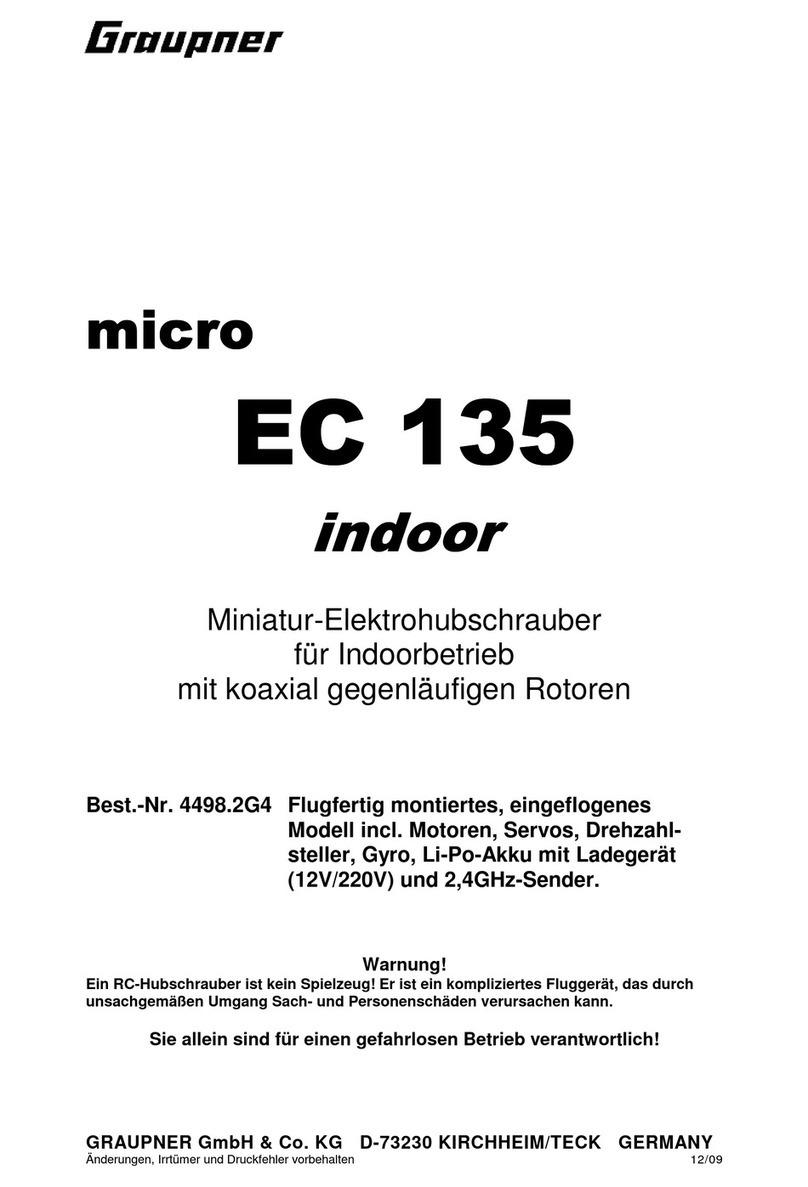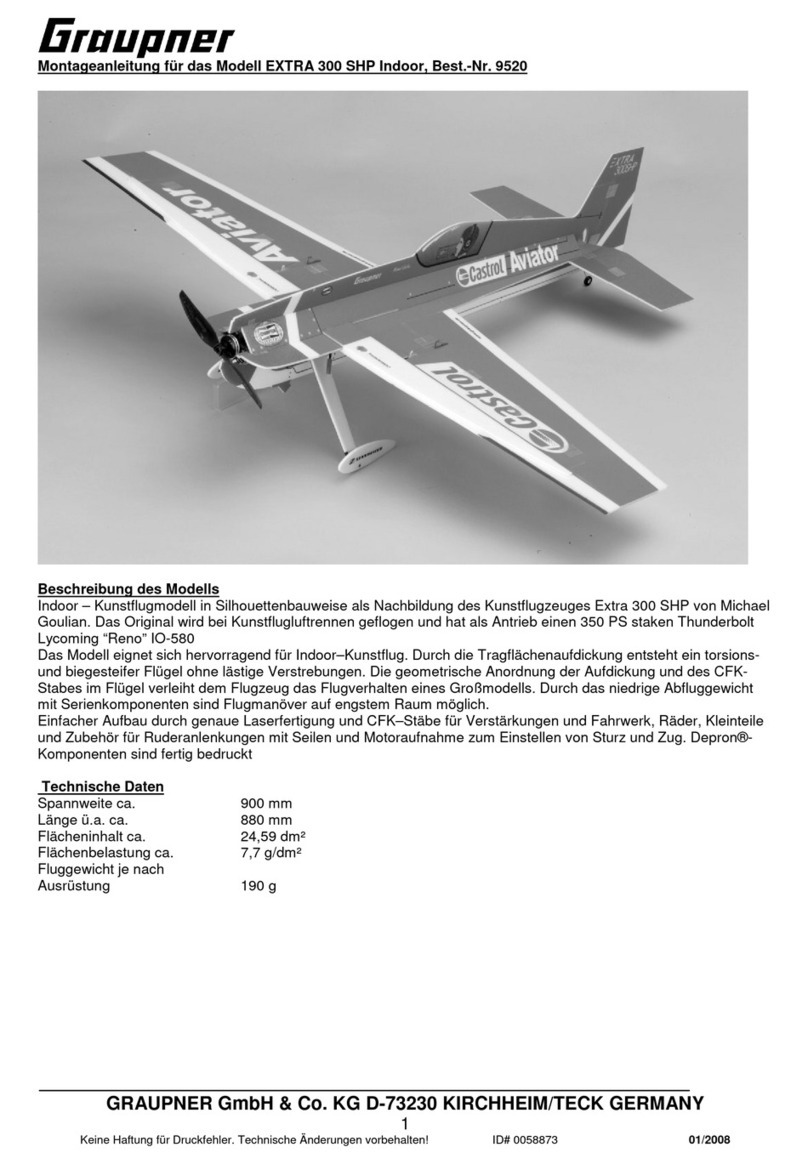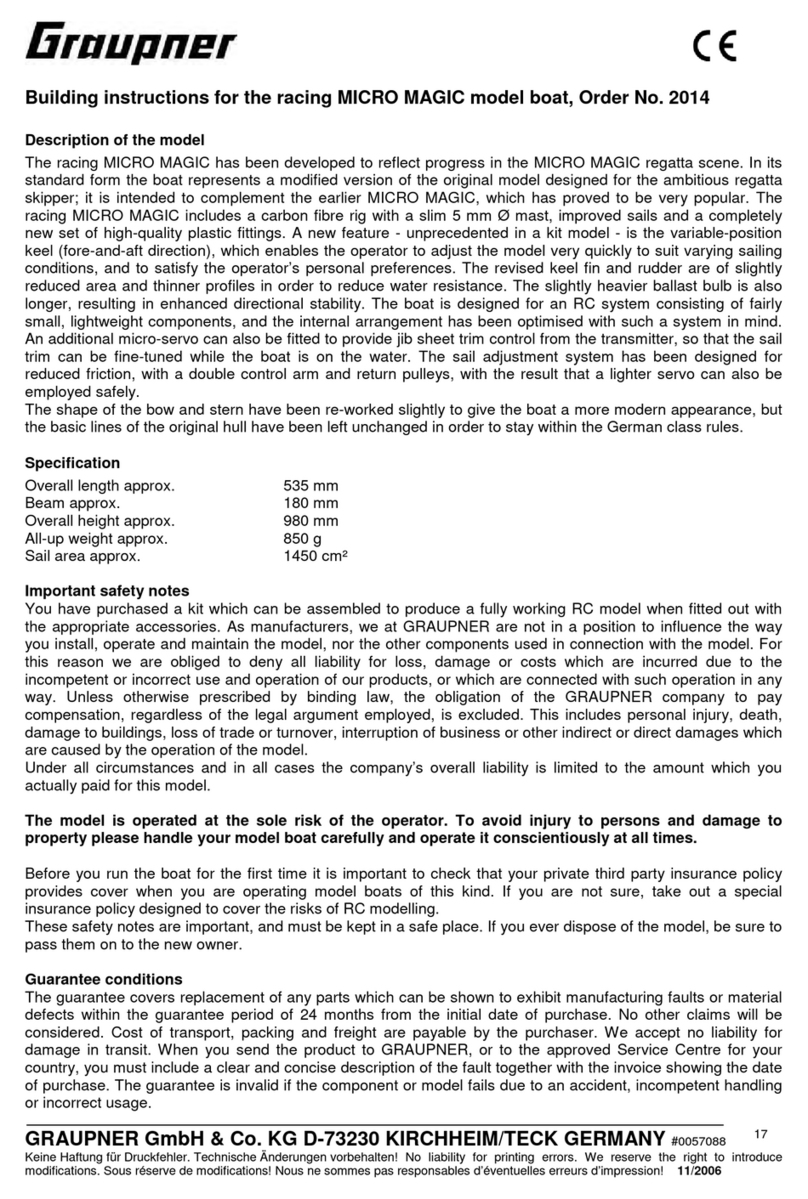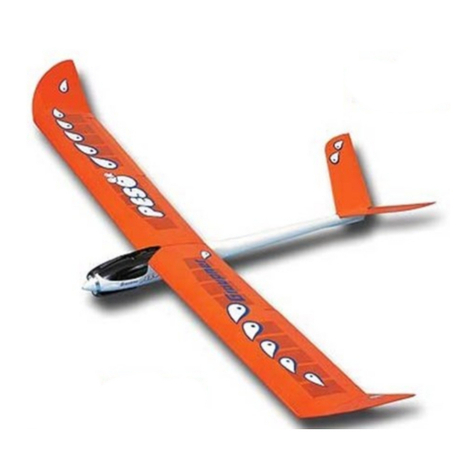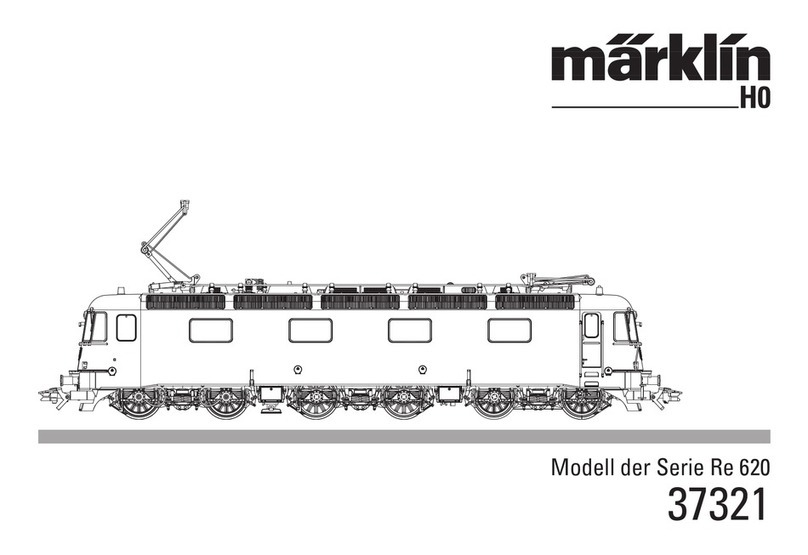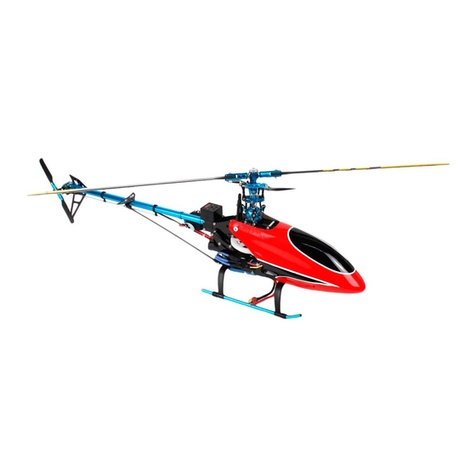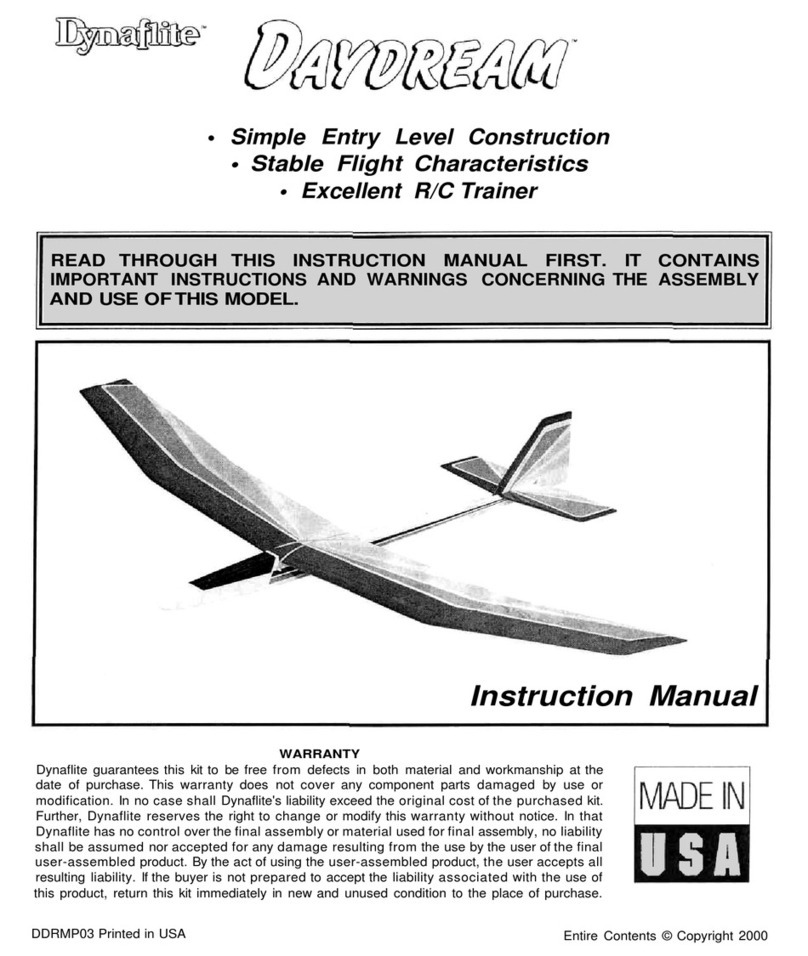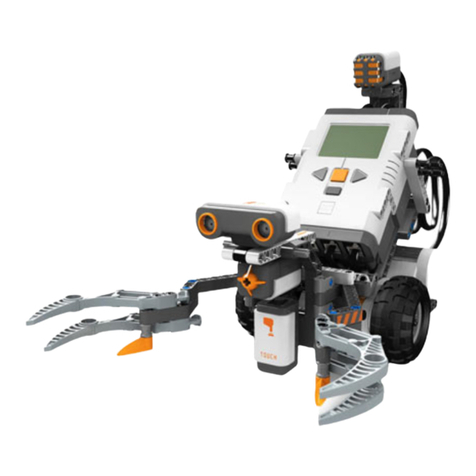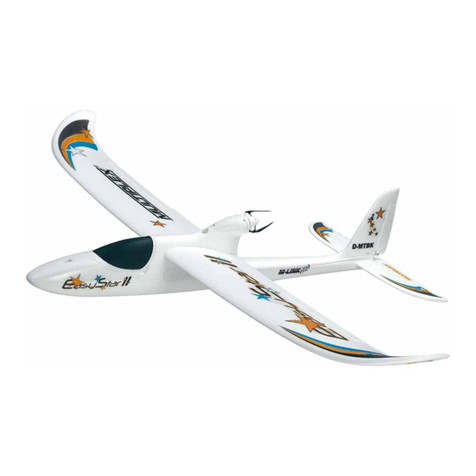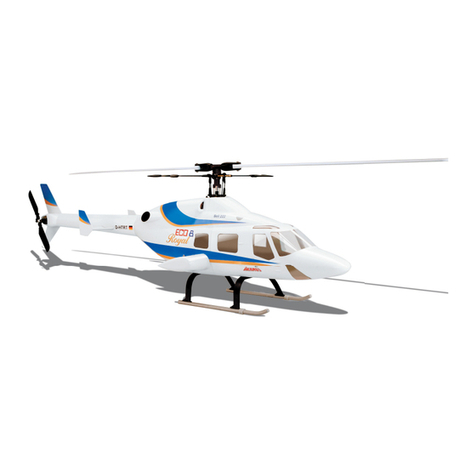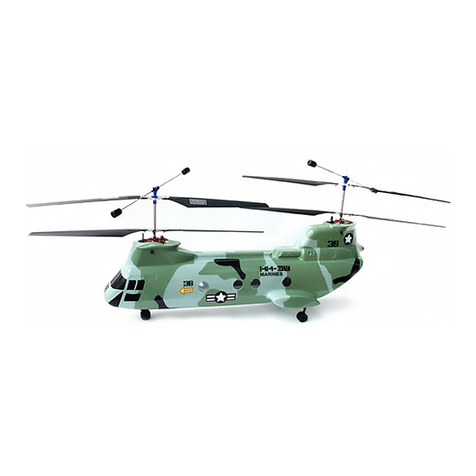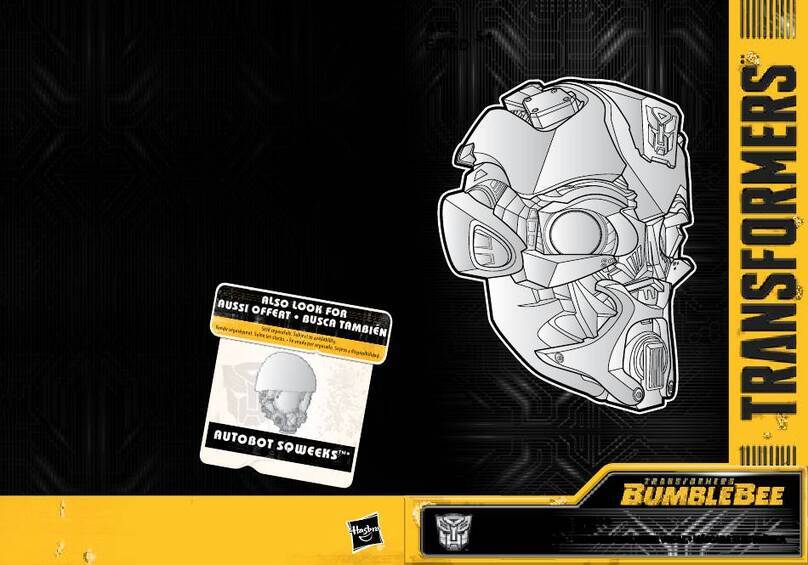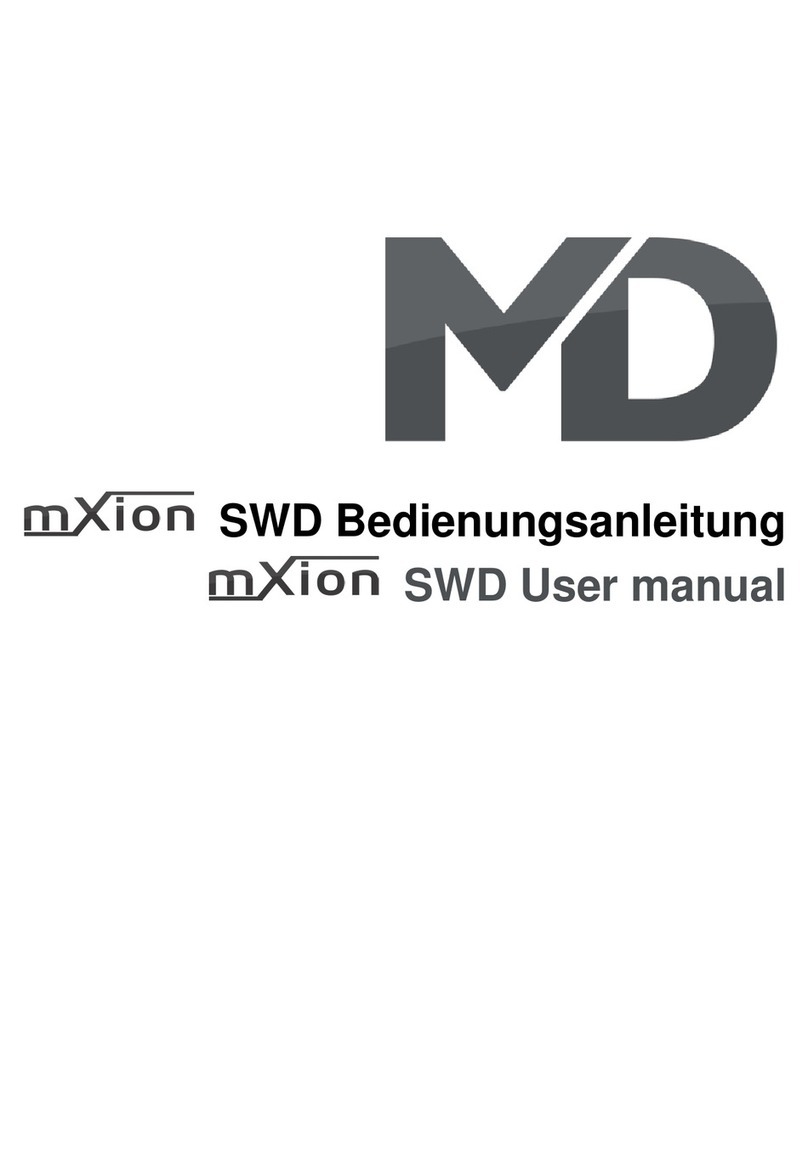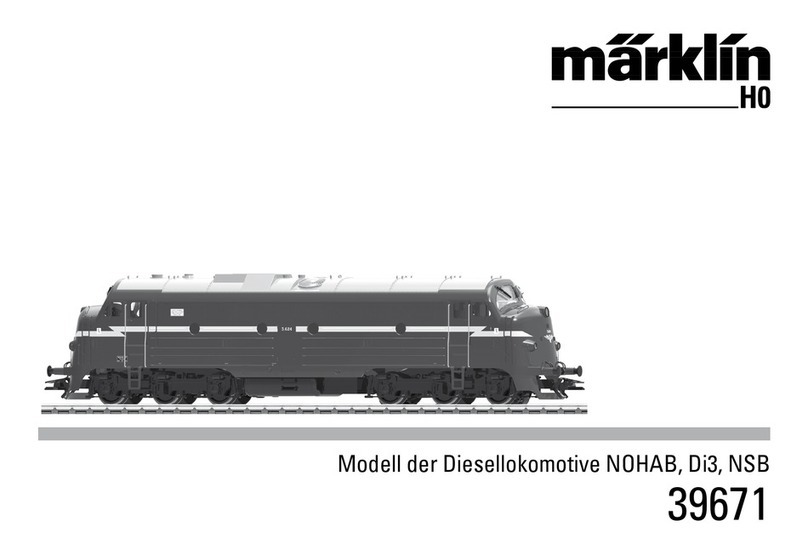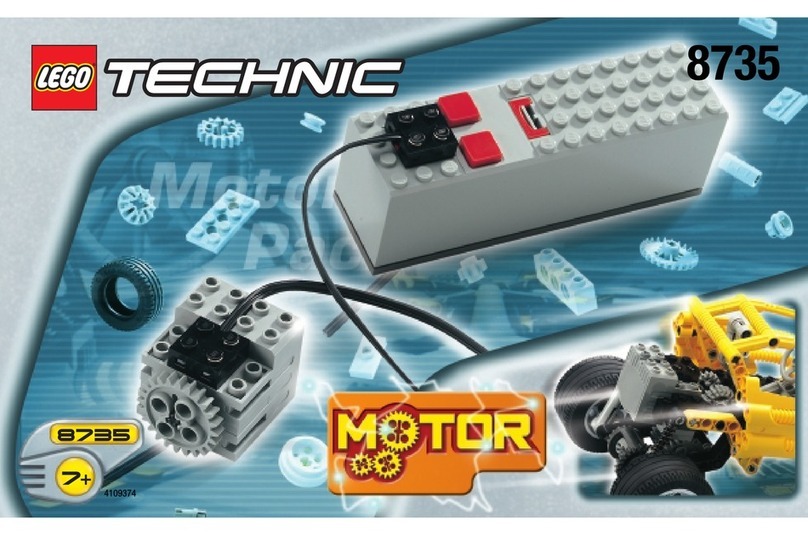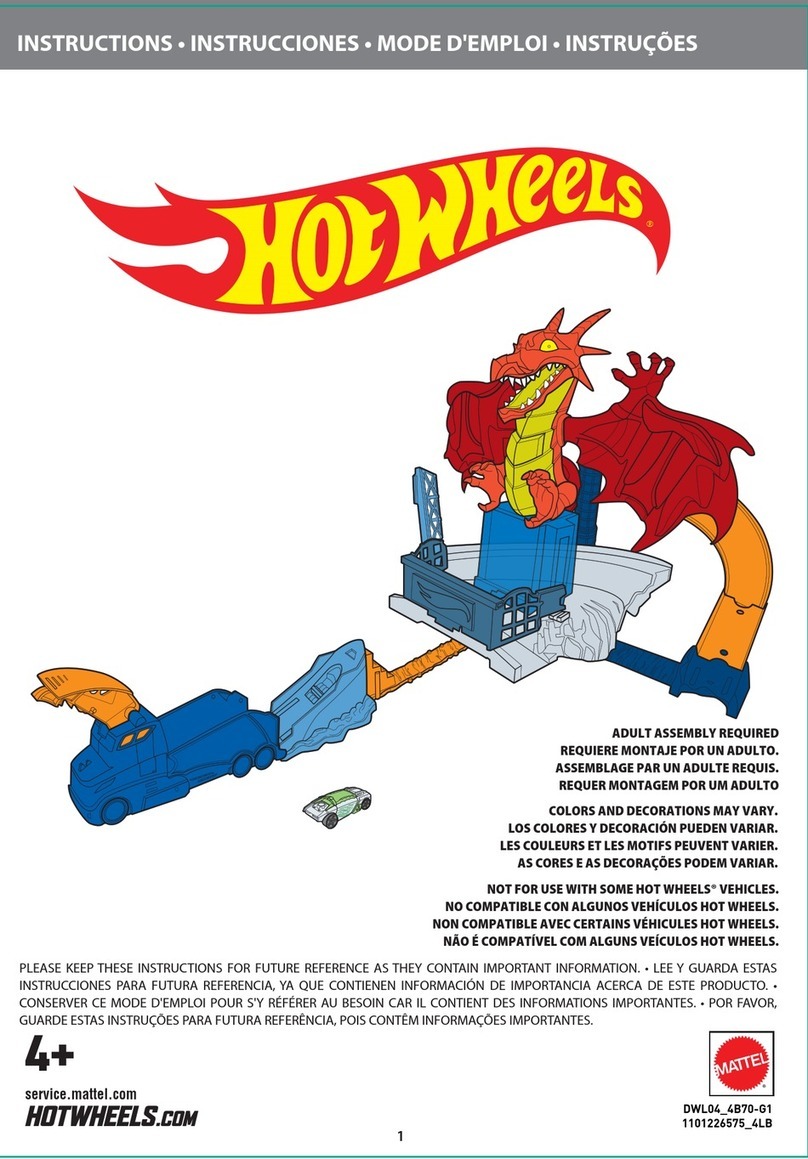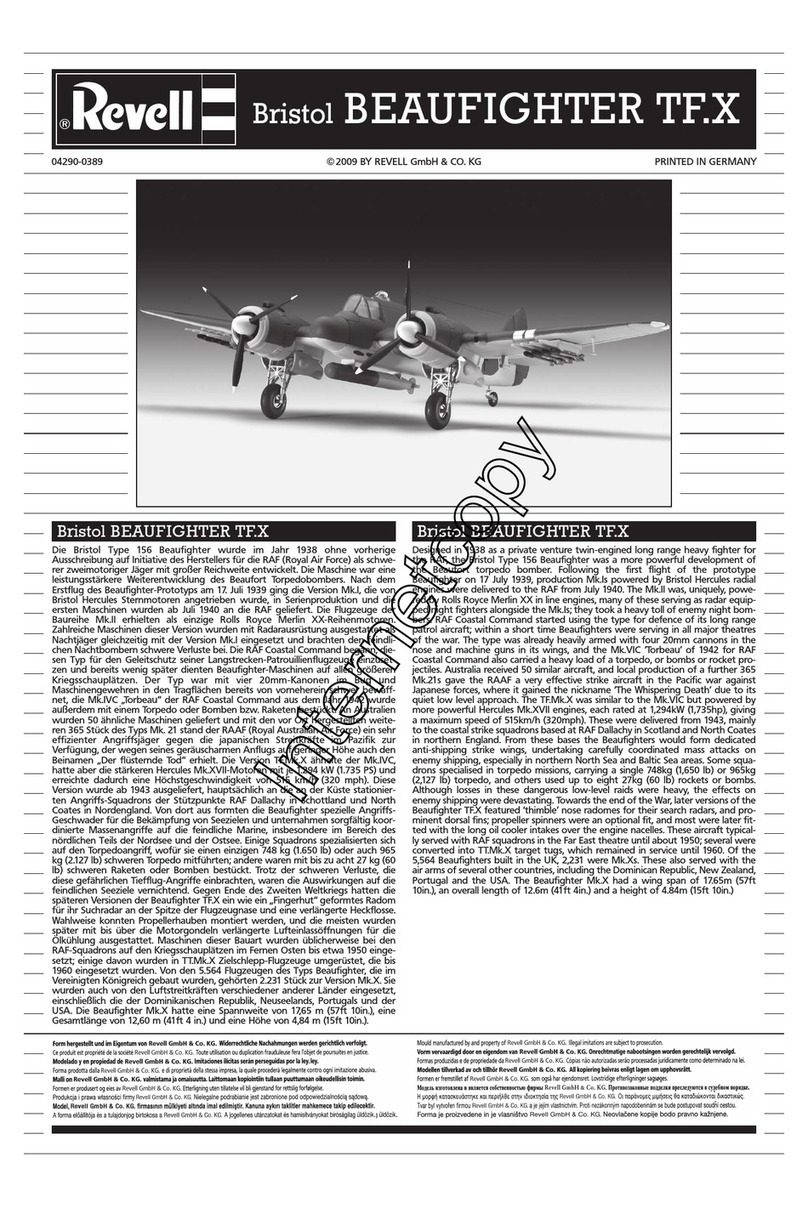
6
be painted, otherwise the paint is unlikely to adhere well. Before gluing parts to the fuselage it is
essential to roughen the surfaces with fine abrasive paper and de-grease them with acetone or similar
solvent, otherwise you will not obtain strong, durable joints. This applies in particular to moulded GRP
fuselages.
Additional items required
Motor and accessories
Motor Silencer or Silencer Propeller
Order No. Order No. Order No. Order No.
1888 1885.33 1870.72 1316.25.18
2701 2701.33 1870.72 1318.28.15
2702 2701.33 1870.72 1318.28.15
Radio control system
For this model you require a four-channel RC system and four servos. The transmitter should also
feature a servo reverse facility.
We particularly recommend: X-412 to mc-24 computer systems. The model is designed for standard-size
servos, e.g. 4041, Order No. 3916.
We recommend the following receiver battery: SANYO AE-1400 AE, Order No. 2524, which should be
properly maintained before and after each flying session, i.e. the pack needs to be cycled (charged and
discharged) several times before it reaches full rated capacity.
For connecting the aileron servo to the receiver you will need a suppressor filter, Order No. 1040. You will
also require foam material for protecting the receiver and battery, e.g. foam rubber, Order No. 1637.
Adhesives
Fast-setting epoxy resin, e.g. UHU plus schnellfest, Order No. 962
Slow-setting epoxy resin, e.g. UHU plus endfest 300, Order No. 950.15
White glue, e.g. UHU coll, Order No. 958.60
UHU hart (cellulose cement), e.g. Order No. 534.10
Cyano-acrylate glue (“cyano”), e.g. Order No. 5821
Thread-lock fluid, e.g. Order No. 952
Accessories for flying the model (not included)
Synthetic oil based glow fuel, to suit motor
Fuel filter, e.g. Order No. 1650.1
Fuel tubing, e.g. Order No. 1643
Manual fuel pump, e.g. Order No. 1610
Glowplug energizer battery and glowplug clip, e.g. Order No. 3253
Electric starter, e.g. Order No. 1628
Starter battery, e.g. Order No. 2592
Tools required (not included)
Various (cross-point) screwdrivers, pointed-nose pliers, flat-nose pliers, side-cutters, balsa knife or razor
blade, set of twist drills, universal glowplug spanner, Z-bend pliers, Order No. 5732.
Don’t start building the model until you have read right through the building instructions and are familiar with
all the model’s components. If you are not satisfied with any part, inform your supplier before you start work
on the model.
Assembling the SKY HERO II
Joining the wing panels
Temporarily fit the two wing panels together on the dihedral brace, and check that the root ribs line up
correctly. Mark the centreline on the dihedral brace using a pencil, so that it is inserted to the same depth in
both wing panels.
Do not glue the wing panels together until you have completed this check.
The wings should be glued together using UHU HOLZ D3 (waterproof wood glue) or UHU plus endfest 300
(24-hour epoxy).
Mix up the resin and hardener according to the instructions on the adhesive packaging (epoxy only). Apply
plenty of epoxy to the inside of the dihedral brace slot in the left-hand wing panel. Apply epoxy to one half of
the dihedral brace and push it into the wing panel as far as the pencil mark. Apply a thin coating of epoxy to
the root rib of the right-hand wing panel and the projecting end of the dihedral brace. Apply plenty of epoxy to

